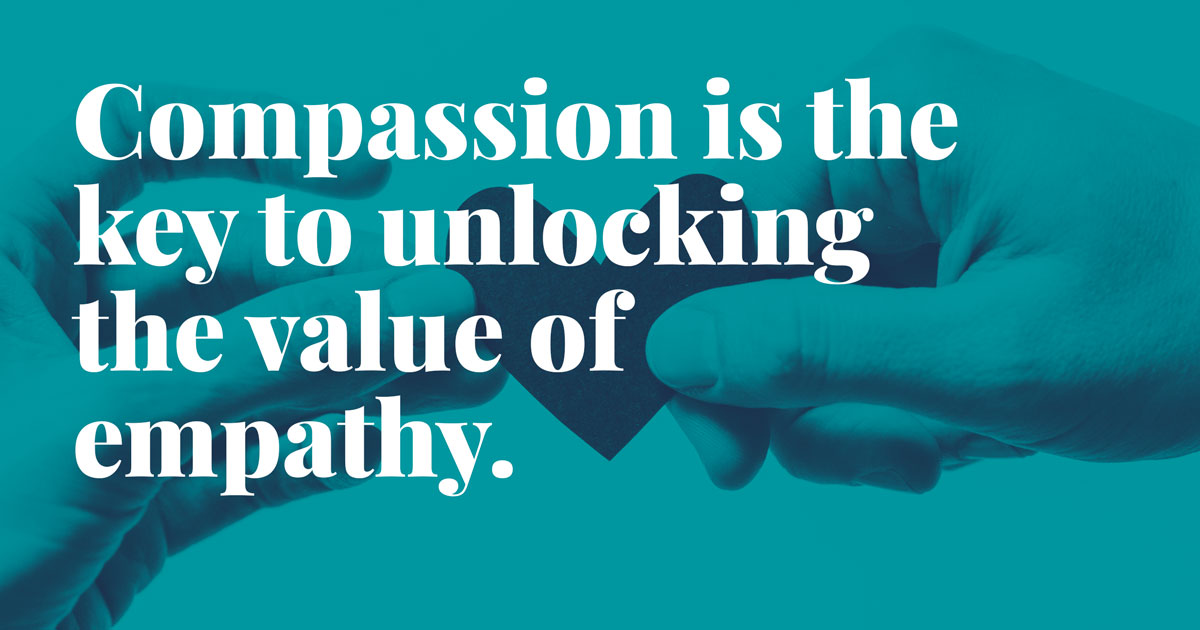
The word empathy is having a moment in the sun right now, in large part due to the insightful work of Tom Kelley and Tim Brown of IDEO. Empathy, as an approach, is being taught in disciplines ranging from design, to leadership, teaching, hospitality, medicine and the list goes on. Having empathy is key to understanding someone else's point of view, which means that if you’re in the business of connecting with people, you need to employ some empathy.
Empathy may be holding you back.
Our brains are wired to connect with one another, and it uses empathy to do so. But did you know that cognitive science points to two types of empathy? Cognitive and Affective empathy.
Cognitive empathy, sometimes referred to as perspective taking, refers to our ability to understand the emotions or mental state of someone else. This is, in my own estimation, the general understanding of the word empathy.
Affective empathy, on the other hand, refers to our ability to actually feel what someone else is feeling. When we practice or experience affective empathy, science suggest that the mirror neurons in our brain create an echo of the emotion we’re observing in our own brain, causing us to feel the emotions, first hand.
Of the two types of empathy, cognitive empathy, might be the one holding you back. Here is why. Psychologist observe what’s called the “too cold to care” effect:
When people try to understand another person’s point of view without internalizing his or her emotions, they can be so detached that they’re not motivated to do anything to actually help that person. - Greater Good
I remember the first time I encountered the “too cold to care” effect. I was working with a smart team of developers on a particularly squirly part of a user interface. We had been working on a solution based on how we saw users behave in the application and how we understood their mental state at this particular interaction. We had been deliberately looking for ways to increase empathy for the users by using personas and journey maps.
I’ll never forget how the tension began to rise as we were faced with the dilemma of either pushing through the engineering complexities in order to deliver a user-centered solution or to cave to the complexity and sacrifice the empathic solution we were aiming for.
The conversation came to an end when the developer on the project, who was also the project leader, declared that he no longer cared what the user needed, it was too complicated to pull off.
This is the danger with cognitive empathy, it doesn’t require you to take action.
Affective empathy isn’t necessarily the solution to the empathy problem either. Those that experience acute levels of affective empathy can easily become overwhelmed with emotion, rendering them paralyzed or exhausted, while others struggle to experience affective empathy at all.
Empathy is important, but it isn’t enough to propel us towards great design, leadership, teaching, hospitality or medicine.
Regardless of how well you’re able to tap into empathy, in either form, you’re wasting your time unless you activate empathy with compassion.

Compassion is the key to unlocking the value of empathy. Without compassion, empathy has no teeth.
Compassion demands that we consider the needs of others, and act in their best interest.
Is empathy holding you back? Compassion can launch you forward.
Further Reading
Photo by Morning Brew on Unsplash


